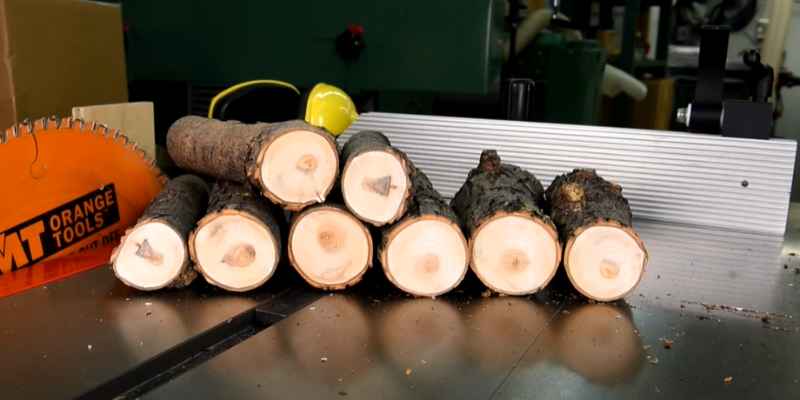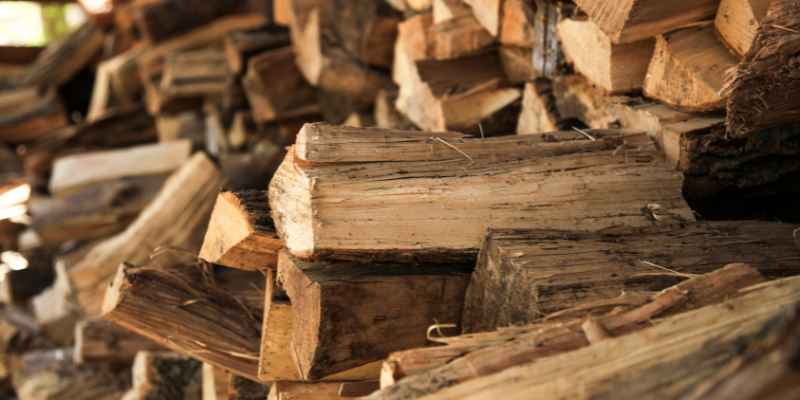Willow Wood is a type of prosthetic limb made from lightweight and flexible materials. It provides comfortable and natural movement for amputees.
Willow Wood is an innovative prosthetic limb designed to enhance the mobility and quality of life for individuals who have undergone amputation. Crafted from lightweight and flexible materials, this device offers exceptional comfort and natural movement for users.
Unlike traditional prosthetics, Willow Wood mimics the suppleness of real limbs, allowing for a more fluid and seamless experience. Its advanced construction incorporates cutting-edge technology and ergonomic design, resulting in a highly functional and user-friendly product. With its emphasis on both practicality and aesthetics, Willow Wood aims to empower amputees by delivering a prosthetic solution that not only improves mobility but also restores confidence. Whether it’s participating in sports, engaging in daily activities, or simply enjoying a walk outdoors, individuals with Willow Wood prosthetics can regain the freedom they once had.
Origins Of Willow Wood
Willow Wood has a fascinating history that dates back to ancient times. Let’s dive into the origins of this remarkable material and explore its ancient legends and historical significance.
Ancient Legends
Ancient civilizations across the globe revered willow wood for its mystical properties and symbolism. In Norse mythology, the willow tree was associated with the goddess Sif, who was known for her beautiful long hair. It was believed that the willow tree held the power to restore vitality and strength. In Celtic folklore, the willow was regarded as a tree of enchantment and magic, often found near sacred wells and oak groves.
The ancient Chinese considered the willow tree as a symbol of resilience and adaptability. It was believed that the tree’s flexible branches could bend without breaking, much like the virtues of a wise leader. In Japan, the weeping willow became an emblem of grace and elegance, often depicted in traditional art forms like painting and poetry.
Historical Significance
The historical significance of willow wood extends beyond myths and legends. Throughout history, civilizations have recognized the practical uses of willow wood, particularly in construction and medicine. The ancient Egyptians, for instance, used willow branches to build furniture and baskets, while the Romans crafted their prized baskets and hampers from the supple and durable willow rods.
The medicinal properties of willow wood were also esteemed throughout history. The ancient Greeks recorded the use of willow bark extract to relieve pain and reduce fevers. This early application eventually led to the development of aspirin, a widely used medication today. The historical significance of willow wood in medicine is a testament to its enduring value.
As we unravel the origins of willow wood, we gain a deeper appreciation for its rich cultural heritage and diverse uses. From ancient legends to historical significance, willow wood continues to captivate and inspire us to this day.

Characteristics Of Willow Wood
Willow wood is known for its unique physical features and symbolic meanings. This versatile and resilient wood has been revered throughout history for its remarkable properties. In this section, we will explore the distinctive attributes that make willow wood so enchanting.
Unique Physical Features
One of the prominent characteristics of willow wood is its flexibility and durability. It has a natural ability to bend without breaking, making it suitable for various applications. This remarkable quality is attributed to the long, slender fibers that compose the wood, allowing it to withstand external forces.
Furthermore, willow wood presents an intricate grain pattern that adds to its aesthetic appeal. The grain ranges from straight to slightly wavy, giving each piece a distinct and captivating look. This unique pattern makes willow wood highly sought after by artisans and craftsmen who appreciate its natural beauty.
Not only is willow wood aesthetically pleasing, but it is also lightweight. This makes it incredibly easy to work with and manipulate. Whether it is carving intricate designs or constructing furniture, the lightweight nature of willow wood allows artists to bring their creative visions to life.
Symbolic Meanings
Beyond its physical characteristics, willow wood holds significant symbolic meanings across different cultures and traditions. Associated with traits like flexibility and adaptability, this wood symbolizes resilience and the ability to weather life’s challenges.
In many ancient cultures, the willow tree was seen as a symbol of emotional healing and renewal. Its ability to regenerate and grow quickly after being cut down resonated with the idea of overcoming obstacles and finding inner strength.
Additionally, willow wood is often linked to intuition and deep emotional connections. It represents the fluidity of emotions and the power of empathy. This symbolic meaning has made willow wood a popular choice when crafting sentimental gifts or objects associated with personal growth.
Overall, the characteristics of willow wood make it a remarkable and meaningful material. Its flexibility, durability, and unique grain pattern make it a favorite among artisans, while its symbolic meanings reinforce its value for emotional and spiritual healing.

Magical Properties Of Willow Wood
Willow wood, long revered for its mystical qualities, possesses a range of magical properties that have fascinated and enchanted people for centuries. This remarkable wood is known for its healing and protective abilities, as well as its capacity to enhance spiritual connections. Let’s explore the magical properties of willow wood in more detail:
Healing And Protective Abilities
Willow wood has a powerful ability to promote healing and protect those who are in contact with it. Its energy is particularly effective in soothing emotional pain and promoting mental well-being. When used medicinally, willow wood can help alleviate headaches, reduce fevers, and relieve rheumatism. Moreover, its protective properties shield against negative energies and can create a harmonious environment.
Enhancing Spiritual Connections
The spiritual properties of willow wood are nothing short of extraordinary. This mystical wood supports the development of psychic abilities and the exploration of higher realms of consciousness. It serves as a conduit for divine messages, enhancing one’s intuition and enabling communication with spirit guides. Additionally, willow wood aids in dream divination, deepening the connection between the dreamer and the subconscious mind.
Traditional And Modern Uses Of Willow Wood
Willow wood, renowned for its versatility and durability, has been utilized for various purposes throughout history. From ancient folklore and mythology to contemporary practices, the applications of willow wood span across cultures and industries. Both traditional and modern uses showcase the remarkable qualities of this natural resource.
In Ancient Folklore And Mythology
Willow wood holds a significant place in ancient folklore and mythology, acting as a symbol of resilience, fertility, and mysticism. In many cultures, willow trees were believed to possess magical properties, often associated with the moon and water. In Celtic mythology, the willow was considered a sacred tree, representing intuition and female energy. These cultural beliefs led to the utilization of willow wood in various rituals and ceremonies.
In addition to its mystical connotations, willow wood offered practical uses in ancient times. Its flexible nature made it an ideal material for constructing baskets, fishing traps, and wicker furniture. The lightweight yet strong characteristics of willow wood made it suitable for creating tools and weapons, such as bows and arrows. The versatility of willow wood made it essential in the everyday lives of ancient societies.
In Contemporary Practices
Today, willow wood continues to find application in a wide range of contemporary practices. In the field of medicine, willow bark extract has been traditionally used for its analgesic and anti-inflammatory properties. The active component, salicin, has been synthesized to develop aspirin, a widely used pain reliever. Moreover, willow wood has proven to be an excellent material for prosthetic limbs, owing to its flexibility and strength.
In the realm of arts and crafts, willow wood is cherished by artisans for its pliability and aesthetic appeal. Talented craftsmen sculpt intricate designs, creating furniture, sculptures, and woven items. The unique grain and texture of willow wood lend a distinct charm to these artistic creations, making them highly sought after in the market.
Willow wood also finds application in environmental conservation efforts. Its fast growth and extensive root system make it valuable for erosion control and soil stabilization. Planting willow trees along riverbanks and coastlines has proven effective in preventing erosion and protecting ecosystems.
In Conclusion
From its mystical origins in ancient folklore to its diverse applications in modern practices, willow wood continues to captivate and serve various purposes. This remarkable natural resource has stood the test of time, proving its worth in numerous industries and cultural traditions alike.
Preserving And Caring For Willow Wood
Proper storage and maintenance play crucial roles in preserving the beauty and longevity of willow wood. By following a few simple guidelines, you can ensure that your willow wood furniture, baskets, or other items remain in superb condition for years to come.
Preventing Damage And Decay
Prevention is key when it comes to protecting willow wood from damage and decay. Here are some essential steps you should take:
- Avoid exposing willow wood to excessive moisture or direct sunlight, as this can cause warping and fading.
- Place willow wood items in a cool, dry area that is well-ventilated.
- Regularly inspect and clean your willow wood pieces to remove any dirt, dust, or stains. Use a soft cloth or brush, and avoid harsh cleaning agents that may damage the wood.
- Apply a protective finish, such as varnish or wax, to create a barrier against moisture and enhance the wood’s natural beauty.
- Keep willow wood away from sharp objects and heavy items that could cause scratches or dents.
- Consider lining willow wood baskets with a soft fabric to prevent snagging or damage to delicate items.
By taking these precautions, you can safeguard your willow wood from potential damage and preserve its charm for years to come.

Frequently Asked Questions For What Is Willow Wood
What Is Willow Wood Good For?
Willow wood is versatile and can be used for various purposes such as making furniture, crafting baskets, and constructing musical instruments. Its flexibility and durability make it ideal for these applications.
What Is Willow Wood Made Of?
Willow wood is made from the wood of the willow tree, which is flexible and lightweight. It is commonly used in the production of prosthetic limbs due to its unique properties.
What Does Willow Wood Look Like?
Willow wood is a type of wood that has a light, creamy color and a straight grain pattern. It is often characterized by its smooth and even texture. The wood is known for being strong, flexible, and resistant to splitting, making it ideal for various applications such as furniture, baskets, and musical instruments.
Is Willow Wood Weak?
No, willow wood is not weak.
Conclusion
To sum up, Willow Wood is an innovative and versatile material with immense potential in various industries. Enabling comfort, durability, and functionality, it has revolutionized the manufacturing of prosthetic limbs, orthotics, and even furniture. With its unique properties and eco-friendly nature, Willow Wood presents a sustainable solution that enhances the quality of life for individuals and contributes to a greener future.
Embracing this technology paves the way for innovation and advancement in the field of materials science.

